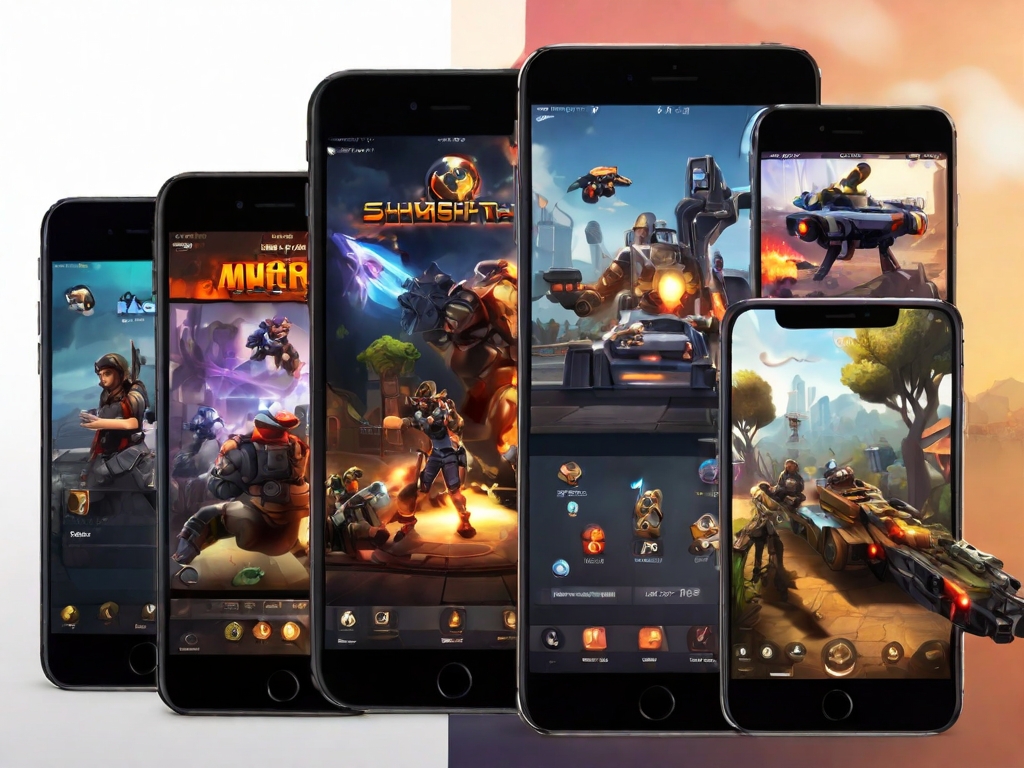In today’s digital-first world, iOS game development stands at the forefront of mobile entertainment. With millions of users worldwide, the Apple ecosystem offers game developers a lucrative, stable, and innovative platform to create engaging and profitable experiences. Whether it’s a simple puzzle game or a graphically intense action title, developing games for iOS can be both creatively satisfying and financially rewarding.
In this comprehensive guide, we’ll dive into the world of iOS game development, exploring tools, technologies, processes, challenges, monetization strategies, and future trends.
Why Choose iOS for Game Development?
Developers have plenty of platforms to choose from, so why is iOS such a favorite for mobile game creation? Here are the key reasons:
1. High Revenue Potential
The Apple App Store consistently generates more revenue than Google Play. While Android leads in global market share, iOS users spend significantly more on apps and in-app purchases, making iOS ideal for monetization.
2. Streamlined Ecosystem
Apple provides a controlled, uniform ecosystem. This simplifies development and ensures consistent performance across all supported devices, unlike Android’s fragmented device landscape.
3. Cutting-Edge Hardware
From advanced GPUs to LiDAR scanners, Apple devices offer high-end hardware that supports immersive, high-performance gaming experiences.
4. Global User Base
Apple has a massive and loyal user base, particularly in the US, UK, Canada, and other high-income regions—making it easier for developers to reach premium markets.
Key Technologies and Tools for iOS Game Development
Creating an iOS game requires a blend of software tools and development environments. Below are the essentials:
1. Xcode
Xcode is Apple’s official IDE for developing iOS apps. It includes a code editor, UI design tools, and device simulators. It’s essential for:
-
Writing in Swift or Objective-C
-
Debugging and performance testing
-
App Store submission
2. Swift
Swift is the modern, powerful programming language developed by Apple. It’s fast, safe, and intuitive—perfect for iOS game development.
3. SpriteKit
Apple’s native 2D game engine, SpriteKit, is great for building lightweight games with physics, animations, and real-time rendering. It supports:
-
Sprite-based scenes
-
Collision detection
-
Audio integration
4. SceneKit
SceneKit is ideal for creating 3D games on iOS. It offers built-in rendering, lighting, and camera systems—great for casual 3D game developers.
5. Metal
For high-performance, graphics-intensive games (like FPS or racing), Metal provides low-level access to the GPU for custom rendering.
6. Unity and Unreal Engine
Popular cross-platform game engines, Unity and Unreal, also support iOS. These engines offer:
-
Cross-platform deployment
-
Advanced physics
-
AR/VR integration
-
Asset marketplaces
The iOS Game Development Process
Let’s break down the process of developing an iOS game from concept to launch:
1. Ideation and Planning
-
Define the game’s genre, mechanics, and objectives.
-
Research the market and competitors.
-
Create a GDD (Game Design Document) outlining gameplay, user interface, monetization model, and development milestones.
2. Wireframing and UI/UX Design
Design the game’s interface, screens, and controls. Focus on:
-
Intuitive gameplay
-
Touch-based interactions
-
Smooth navigation
Tools like Sketch, Figma, and Adobe XD are popular for UI design.
3. Game Development and Programming
Using Xcode and a game engine, developers build:
-
Game logic (player movement, scoring, levels)
-
Physics systems (collisions, gravity)
-
Audio, animations, and special effects
Programming languages like Swift or C# (in Unity) are commonly used.
4. Asset Creation
Design 2D sprites, 3D models, backgrounds, and characters using tools such as:
-
Blender
-
Adobe Photoshop
-
Maya
-
Procreate
5. Testing and QA
Testing is crucial to ensure:
-
Smooth performance on various iOS devices
-
No crashes or bugs
-
User-friendly controls
-
Minimal battery consumption
Testing phases include alpha, beta, and release candidate builds.
6. App Store Submission
Before launching:
-
Create a developer account ($99/year)
-
Ensure your app meets Apple’s guidelines
-
Prepare metadata: title, description, keywords, screenshots, and privacy policies
Use App Store Connect for app submission, updates, analytics, and reviews.
Monetization Strategies in iOS Game Development
Monetizing your game effectively is key to long-term success. Common models include:
1. Freemium (In-App Purchases)
Offer the game for free but sell virtual items, upgrades, or currency within the app.
2. Ads and Rewarded Videos
Incorporate ads through services like AdMob or Unity Ads. Rewarded videos encourage users to watch ads in exchange for game perks.
3. Paid Games
Charge users an upfront fee to download the game. This model works best for unique, high-quality experiences.
4. Subscriptions
Offer premium content, features, or battle passes on a recurring basis.
Popular iOS Game Genres
Understanding what works in the market helps shape your development strategy. Some high-performing iOS game genres include:
-
Puzzle and Casual Games (e.g., Candy Crush)
-
Hyper-casual Games (e.g., Helix Jump)
-
Strategy and RPGs (e.g., Clash of Clans)
-
Battle Royale and Shooters (e.g., Call of Duty: Mobile)
-
Simulation Games (e.g., The Sims Mobile)
-
Augmented Reality Games (e.g., Pokémon GO)
Challenges in iOS Game Development
Despite the opportunities, developers face some challenges:
1. App Store Approval Process
Apple’s review process is stringent. Apps can be rejected for performance issues, misleading metadata, or privacy violations.
2. Device Compatibility
While less fragmented than Android, Apple has multiple screen sizes and devices, from iPhones to iPads and Apple TV.
3. Performance Optimization
Games must run smoothly without overheating the device or draining the battery—especially for graphic-heavy apps.
4. Data Privacy Compliance
You must comply with Apple’s data privacy rules, including App Tracking Transparency (ATT) and data usage disclosure.
Trends in iOS Game Development (2025 and Beyond)
The mobile gaming industry is evolving rapidly. Here are top trends shaping the future of iOS games:
1. AR and Spatial Computing
With Apple Vision Pro and ARKit advancements, immersive AR games are the next frontier for iOS.
2. AI Integration
AI is helping create smarter NPCs, adaptive gameplay, and enhanced player engagement through machine learning.
3. Cloud Gaming
Apple’s support for controller-based gameplay and faster Wi-Fi is paving the way for high-quality streaming games.
4. Cross-Platform Play
iOS games are now being developed to support cross-play with Android, PC, and even consoles—enhancing reach and user retention.
5. Hyper-Personalization
Using data analytics, developers are tailoring gameplay experiences to individual user preferences and behavior.
Tips for Success in iOS Game Development
-
Start simple: Build a minimum viable product (MVP) and expand gradually.
-
Prioritize UX: iOS users expect clean, fluid, and intuitive interfaces.
-
Listen to user feedback: Beta testing and user reviews can provide invaluable insights.
-
Stay updated: Follow Apple’s developer announcements and SDK updates.
Final Thoughts
iOS game development is a powerful avenue for developers and entrepreneurs to create engaging, profitable mobile experiences. With Apple’s robust ecosystem, high-paying audience, and top-tier tools, building games for iOS offers unparalleled opportunities in mobile gaming.








0 Comments